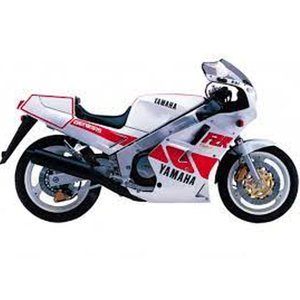Yamaha FZR 750 (1987-1990): A ’80s Sportbike Icon Revisited
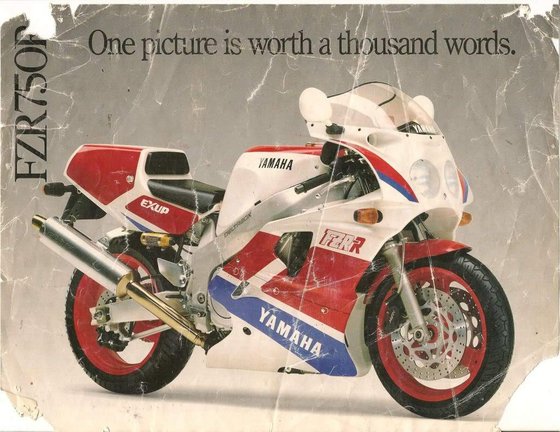
Introduction
The late 1980s marked a golden era for sportbikes, and the Yamaha FZR 750 stands as a defining machine of this period. Built from 1987 to 1990, this generation introduced groundbreaking engineering that blended racetrack DNA with street-riding practicality. Whether you’re a vintage bike enthusiast or a modern rider curious about ’80s legends, the FZR 750 remains a fascinating study in performance innovation.
Yamaha’s “Genesis” philosophy—emphasizing lightweight construction and high-revving engines—shaped the FZR series. But how does this bike hold up decades later? After a spirited test ride on a meticulously maintained 1990 FZR 750 R, here’s an in-depth look at why this machine still commands respect—and what it’s like to own one today.
Design & Ergonomics
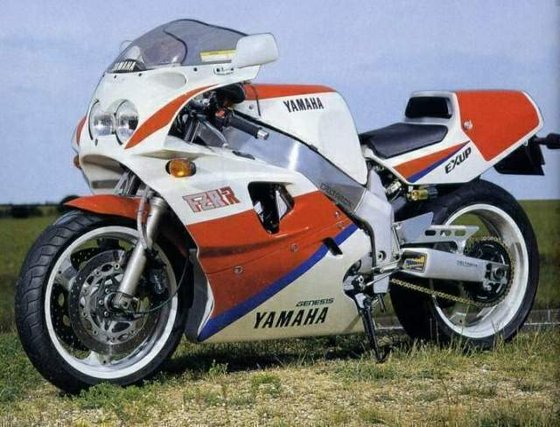
The FZR 750’s design screams ’80s aggression, with sharp lines, a angular fuel tank, and a distinctive twin-headlamp setup (later models featured a flip-up design). Its aluminum “Deltabox” frame was revolutionary, offering rigidity while shaving weight—a stark contrast to the steel frames of its rivals. At 785 mm (30.9 inches), the seat height is approachable for riders of average height, though the narrow seat profile and forward-leaning posture remind you this is a sportbike first.
Weighing in at 215 kg (474 lbs) with fluids, the FZR isn’t a featherweight by modern standards. Still, the weight distribution feels neutral when moving, with a low center of gravity from the inline-four engine. The 19-liter (5 US gallon) fuel tank provides decent range for weekend rides, though the bike’s thirst at higher RPMs might require frequent stops during spirited riding.
Engine & Performance
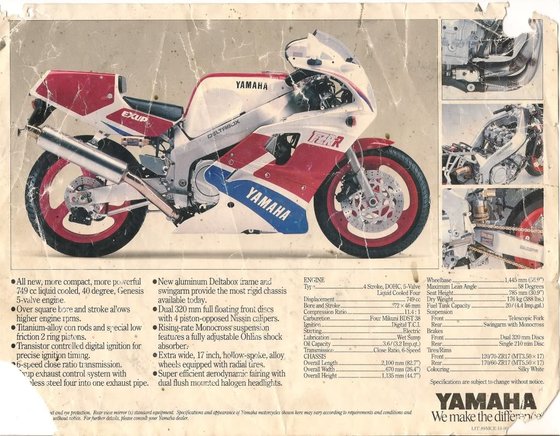
The heart of the FZR 750 is its 749cc liquid-cooled inline-four engine, featuring Yamaha’s signature 5-valve-per-cylinder design (three intake, two exhaust). This setup, paired with double overhead cams (DOHC), allows the engine to breathe efficiently at high revs. On the road, the power delivery is linear but explosive past 8,000 RPM, peaking at 121 HP (88.3 kW) @ 12,000 RPM in the OW01 race-bred variant. Even the detuned “R” model’s 100 HP (74 kW) feels visceral, especially when the 38mm Mikuni carburetors roar to life.
Acceleration is brisk, with a claimed 0-100 km/h (0-62 mph) time of 3.2 seconds and a top speed exceeding 250 km/h (155 mph) for the OW01. The 6-speed gearbox shifts with mechanical precision, though the cable-operated clutch requires a firm pull in stop-and-go traffic. At cruising speeds, the engine settles into a relaxed 5,000 RPM hum at 120 km/h (75 mph), but twist the throttle, and it transforms into a snarling beast—a reminder of its Supersport heritage.
Handling & Ride Experience
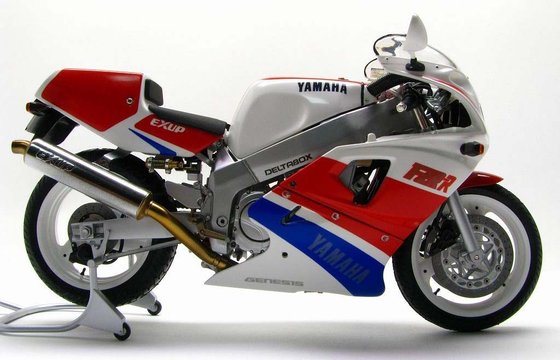
Where the FZR 750 truly shines is in its handling. The 43mm telescopic forks and Öhlins rear monoshock (on the OW01) provide a surprisingly compliant ride, absorbing bumps while maintaining razor-sharp feedback. Push it into a corner, and the chassis responds with telepathic agility, aided by the 120/70-ZR17 front and 170/60-ZR17 rear tires.
The brakes—dual 280mm front discs with 4-piston calipers and a single 177mm rear disc—lack the initial bite of modern radial setups but offer progressive stopping power. At high speeds, the bike remains stable, though crosswinds can unsettle the lightweight front end. For a 30-year-old design, it’s astonishing how accessible the limits feel—a testament to Yamaha’s engineering.
Competition
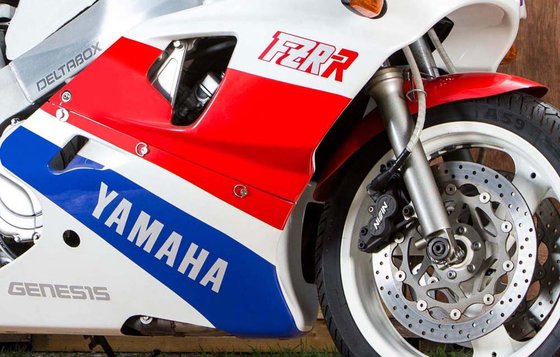
In the late ’80s, the FZR 750 faced fierce rivals:
- Honda VFR750R (RC30): The RC30’s V4 engine and single-sided swingarm made it a homologation legend. While the Honda had a broader torque curve, the FZR’s lighter chassis and higher-revving engine gave it an edge on tighter circuits.
- Suzuki GSX-R750: The GSX-R prioritized weight savings with its oil-cooled engine, but its raw, twitchy handling couldn’t match the FZR’s refinement.
- Kawasaki Ninja ZX-7: A touring-focused sportbike, the ZX-7 offered more comfort but lagged in outright power and track readiness.
The FZR 750 struck a balance between track aggression and street usability, though the RC30’s build quality and exclusivity made it the pricier collector’s choice. Today, the FZR remains a more affordable entry into ’80s superbike culture.
Maintenance
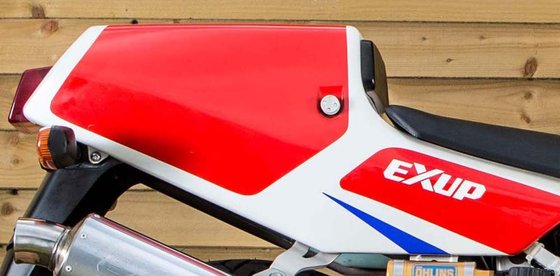
Owning an FZR 750 requires diligence, but its mechanical simplicity compared to modern bikes is a virtue. Here are key considerations:
- Valve Adjustments: With 20 valves total, checking clearances every 6,000 km (3,700 miles) is critical. Intake valves should be 0.11–0.20 mm (0.004–0.008 in), exhaust 0.21–0.30 mm (0.008–0.012 in). Use a quality feeler gauge.
- Carburetor Tuning: The Mikuni BS38 carbs demand synchronization every season. The air screw’s factory setting is 2.5 turns out, but altitude or aftermarket exhausts may require adjustments.
- Oil Changes: Use SAE 20W-40 mineral oil (3.2L with filter). Modern synthetics like 10W-40 are acceptable but avoid ultra-thin grades.
- Cooling System: The 2.5L liquid-cooling system needs annual flushing. Check for leaks around the aging plastic radiator fittings.
- Chain & Sprockets: The 108-link chain and 17/45 sprocket combo wears quickly under hard use. Upgrade to an X-ring chain for longevity.
For upgrades, MOTOPARTS.store recommends:
- NGK Iridium Spark Plugs (DR8EIX): Improves throttle response over stock copper plugs.
- High-Performance Brake Pads: Compensate for the vintage braking system’s limitations.
- LED Lighting Kits: Enhance visibility without altering the classic look.
Conclusion
The Yamaha FZR 750 isn’t just a relic—it’s a living testament to an era when sportbikes were raw, mechanical, and unapologetically thrilling. Its 5-valve engine wails with character, its chassis dances through corners, and its analog nature demands skill from the rider. While modern bikes eclipse it in technology, few can match the FZR’s visceral connection to the road.
For owners today, maintaining this icon is a labor of love. Thankfully, MOTOPARTS.store carries the essentials to keep your FZR 750 running—and roaring—for decades to come. Whether you’re restoring a barn find or optimizing a track-day weapon, this Yamaha remains a masterpiece worth preserving.
Specifications sheet
| Engine | |
|---|---|
| Stroke: | Four-stroke |
| Max power: | 88 kW | 118.0 hp |
| Max torque: | 70 Nm |
| Fuel system: | 4x 38mm Mikuni carburetors |
| Lubrication: | Wet sump |
| Max power @: | 12000 rpm |
| Displacement: | 749 ccm |
| Fuel control: | Double Overhead Cams (DOHC) |
| Max torque @: | 9000 rpm |
| Bore x stroke: | 72.0 x 46.0 mm (2.8 x 1.8 in) |
| Configuration: | Inline |
| Cooling system: | Liquid |
| Compression ratio: | 11.4:1 |
| Number of cylinders: | 4 |
| Valves per cylinder: | 5 |
| Dimensions | |
|---|---|
| Wheelbase: | Not specified |
| Dry weight: | 187 |
| Wet weight: | 215 |
| Seat height: | 785 mm (30.9 in) |
| Fuel tank capacity: | 23 L (6.1 US gal) |
| Drivetrain | |
|---|---|
| Final drive: | chain |
| Chain length: | 108 |
| Transmission: | 6-speed |
| Rear sprocket: | 45 |
| Front sprocket: | 17 |
| Electrical | |
|---|---|
| Ignition: | Transistor-controlled digital |
| Starting system: | Electric |
| Maintenance | |
|---|---|
| Rear tire: | 170/60-17 |
| Engine oil: | 20W-40 (standard) / 10W-40 (OW01 variant) |
| Front tire: | 120/70-17 |
| Idle speed: | 1200 ± 50 rpm |
| Brake fluid: | DOT 4 |
| Spark plugs: | NGK DR8EA or NGK DR8EIX |
| Spark plug gap: | 0.7 |
| Coolant capacity: | 2.5 |
| Forks oil capacity: | 0.88 |
| Engine oil capacity: | 3.2 |
| Engine oil change interval: | Every 5000km or 2 years, whichever comes first |
| Valve clearance (intake, cold): | 0.11–0.20 mm |
| Valve clearance check interval: | 24,000 km / 15,000 mi (recommended) |
| Valve clearance (exhaust, cold): | 0.21–0.30 mm |
| Recommended tire pressure (rear): | 2.3 bar (33 psi) |
| Recommended tire pressure (front): | 2.3 bar (33 psi) |
| Additional Notes | |
|---|---|
| Clutch: | Wet, multiple-disc, cable-operated |
| Exhaust: | Alloy muffler |
| Variants: | Includes FZR 750 R (100 HP) and FZR 750RR OW01 (121 HP) models within this generation |
| Chassis and Suspension | |
|---|---|
| Frame: | Aluminum twin-spar |
| Rear brakes: | Single 177mm disc, 2-piston caliper |
| Front brakes: | Dual 280mm discs, 4-piston calipers |
| Rear suspension: | Öhlins Monocross monoshock, adjustable preload, compression, and rebound damping |
| Front suspension: | 43mm telescopic fork, adjustable preload, compression, and rebound damping |



